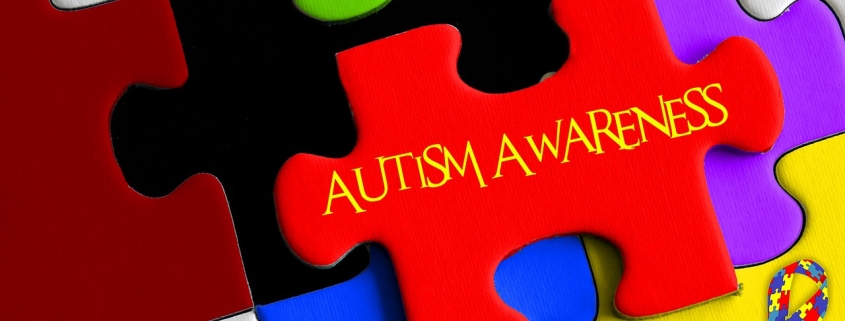Caregiving for Our Beautiful, Unique Children on the Spectrum in the Time of Covid-19
One in 59 Americans fall somewhere on the Autism Spectrum. April is National Autism Awareness Month with the theme of “Celebrating our Differences.” The upending of routines, support services, and positive outlets during these unprecedented times is acutely felt by your child right now. While autism affects people in different ways, there are a few common experiences: a child with autism may feel overwhelmed by changes in routine, suffer information overload, or experience increased anxiety.
Perhaps you are also feeling very much that way right now! If you’ve found your way here, we know you are patient, kind, and committed to meeting this challenge head-on. We offer the following suggestions and coping strategies as a general guideline. Perhaps not everything will be the right fit for your home, but take what you can and do reach out to your child’s school or a local autism group if your needs go beyond these recommendations.
Set a Schedule.
Establishing a “new normal” with a predictable schedule is paramount to stable life at home. Pajama days are fun for the weekend, but you don’t want “slouching” to become the new normal. It’s okay to sleep in a bit later to ensure your child is well-rested, but set the expectation that you will all get up, get dressed, and have breakfast like usual.
It helps to do something that signifies the start of the school day. While you’d normally get in your car and drive to school, perhaps you take a brief walk around the block to get fresh morning air into your lungs and mentally prepare for the day.
A manageable at-home routine might include:
- School work – This is best done early, while your child is fresh. If your child starts to feel restless, try an exercise break, rather than pushing too hard.
- Exercise – Take as many short exercise breaks as you can throughout the day!
- Lunch – Enjoy your favorite balanced meal of protein, fruit, veggie, and fun snack.
- Activity – While you’re resting and digesting, give your child a puzzle to do or play a board game together. If you have household chores to do, invite your child to help. Baking together is a pleasant way to spend time together. (Here are some family-friendly recipes for the upcoming Eastern Orthodox Easter, Cinco de Mayo or National Puerto Rican Day.)
- Downtime – Offer an hour of device or TV time. Some families are taking this time to learn a new hobby like watercolor painting, digital piano playing, or knitting. Reading or listening to an audiobook could be a nice, quiet activity before dinner and bedtime routine.
- Social time – Setting up a weekly Zoom chat with family members, cousins, or friends from school can help your child practice social skills, combat feelings of loneliness, and share what he or she has been doing over this extended break.
Every day may not be perfect, but do your best to remain consistent and you’ll see your child thrive on the new schedule in no time.
Create visual cues.
Try to stay consistent each day. Make several visual charts for your child’s reference:
- Communication of Expectations — “First chicken nuggets, then ice cream,” or “First puzzle, then iPad,” or “First get dressed, then brush teeth.”
- Daily Schedule — There are many different types of visual schedules — or create your own!
- Bathroom Etiquette – Use toilet? Use paper? Flush? Wash hands?
- Meal Time Talk – How was your day? Today I ________. Please pass the _______.
- Meal Etiquette – Small bites. Lips together. Look up.
- Door Reminders – “Close door when finished” can help keep your fridge cold.
- Time – Use a colorful sand timer to provide a sense of moving along from task to task.
Visual cues give your child greater sense of certainty, control, and ownership over the day.
Communicate open and honestly.
Older children may be full of questions and anxiety at this time. They will look to you to be the confident, protective leader that grounds them. Explain that you will have your schedule, wash your hands, practice social distancing, and stay safe. (Check out our guide on how to talk to kids about Covid here!)
Design a space.
Now that your child will be home all day, take a room by room assessment to determine if added childproofing must be done. For instance, you may need to tuck away medications or other dangerous items, fasten furniture to the wall, block off stairs, or lock windows and doors.
Beyond basic safety, your child will appreciate having a distinctive working space – a worktable, a cozy sensory pea pod reading nook, or just someplace relaxing where distractions are minimal. Work in natural and dimmable lighting, as well as natural accents like plants or a hammock, if possible. Use a desk caddy or rolling craft organizer to arrange supplies.
Move every day, without exception.
Getting outside is ideal. Kick a soccer ball in the backyard. Playing frisbee or hopscotch. Take a walk around the neighborhood or local park (being mindful of social distancing, of course.) If it’s cool or rainy outside, try fun GoNoodle dancing or Cosmic Kids Yoga for mindful movement.
Address the challenges.
Telehealth support using video-based consultations can be helpful for handling challenging behaviors. It can be helpful to jot down “What happened,” “What it looked like,” and “What happened afterward” to relay to your support team, so they can help you identify patterns and progress.
Reward good behavior.
There are many ways to work positive incentives into the day.
- Sticker Charts – Some children respond well to sticker charts that lead to a special book, small toy, or choice activity. You can tailor these charts to your child’s particular area of difficulty. For instance, you might award a sticker for every 30 minutes spent on-task, or for getting through the transition from bath to pajamas without a fuss.
- Choice Box – When your child seems restless or disengaged, use a fun Choice Box to ignite focus again. Rotate the items from day to day, such as fidget spinners, stress relievers, spinning tops, rainbow scratch art pads, Play Doh, sticker books, puzzles, finger paints, light-up toys, stuffed animals, music instruments, essential oil smelling bottles, pipe-cleaners, puppets, bubbles, or whatever is of interest to your particular child.
- Bonding – We all have our struggles. Maybe your child is struggling to finish a journal entry or trying hard to reduce Echolalia. Be sure to recognize your child’s efforts and celebrate small victories with a hug, praise, a living room dance party, ice cream social, or a popcorn-and-movie night.
In all of this, remember to be kind to yourself and take a moment to breathe… to just BE. It’s helpful to have goals, but we don’t want our schedules to run over us like a steamroller. If one day your child wants to bake cookies, play with Play Doh, and run in the wet grass, FLEX. Tomorrow is another day. Some days will be more productive than others, whether you are a family supporting someone on the spectrum or not. In those trying moments, all you can do is your best. You may have to step out of the room to belly breathe or you may have to dial moral support from time to time. That doesn’t make you weak; it makes you human. Though you are focused on caregiving for your child, remember to eat well, get your rest, stay active, limit news consumption, and set goals for yourself, too. Carve out small pockets of time to use with purpose and do an activity that centers you. When all this is over, you always have a home at Shine. Stay safe out there!



